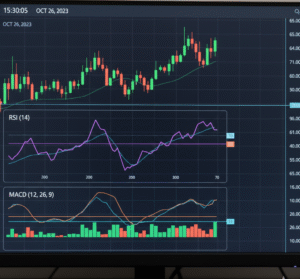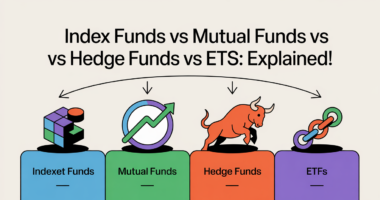Analyzing cryptocurrency market trends is crucial. Moreover, technical analysis (TA) studies past price data and patterns to forecast future price movements. Additionally, fundamental analysis examines on-chain data and project fundamentals to assess value. Therefore, investors combine chart analysis with technical indicators and sentiment metrics.
Technical Analysis Strategies
Chart analysis highlights market trends; candlestick charts allow analysts to visualize price action, while support/resistance levels act as floors and ceilings where prices often bounce. Additionally, trend lines reveal the prevailing market direction, helping to set entry and exit points. Moreover, combining indicators like RSI and MACD with these tools can yield more reliable signals.
RSI and MACD Indicators

The Relative Strength Index (RSI) measures the speed and magnitude of price changes; readings above 70 indicate overbought conditions, while below 30 indicate oversold conditions. Similarly, the MACD tracks the relationship between two EMAs (typically 12-day and 26-day) and generates buy/sell signals when its MACD line crosses above or below the signal lineyouhodler.com. Additionally, traders often confirm signals by using RSI and MACD together to improve timing and reduce false signals.
Fundamental and On-Chain Analysis
On-chain data provides unique insights beyond price charts. On-chain metrics like transaction volume and active addresses reveal network usage. Moreover, monitoring large transfers shows whale behavior: moving coins onto exchanges often signals an impending sell-off, while withdrawing coins can indicate long-term holdingbroscorp.net. Similarly, project fundamentals matter: evaluating a coin’s white paper, development team, token supply, and adoption helps assess its value. Finally, combining on-chain insights with strong fundamentals can yield a robust investment thesis.
News and Market Sentiment
For instance, news events and social sentiment can sway crypto prices. Moreover, tools like the Crypto Fear & Greed Index quantify market mood on a scale from extreme fear to extreme greedcoinmarketcap.com. Consequently, extreme sentiment readings may hint at trend reversals: high greed can precede a pullback, while intense fear often suggests a buying opportunity. Additionally, following crypto news outlets and social media sentiment provides context that complements chart patterns.
Practical Tips for Analysis
- Use charting platforms: For example, TradingView or Binance offer charting tools for trend lines and indicators.
- Combine methods for confirmation: Furthermore, confirm trade ideas by checking multiple indicators (RSI, MACD, volume) and trend lines.
- Monitor on-chain analytics: Likewise, tools like Glassnode or CryptoQuant provide real-time on-chain data (transaction volumes and transfers) to anticipate market moves.
- Stay updated on news: Additionally, follow credible crypto news sources and sentiment indexes to spot catalysts impacting trends.
- Manage risk: Always set stop-losses and diversify your research. Ultimately, no single metric guarantees success, so maintain a balanced strategy.
Analyzing crypto market trends requires a balanced mix of technical charts, on-chain insights, and news awareness. Consequently, by using these strategies, advanced investors can navigate volatility and spot opportunities.









